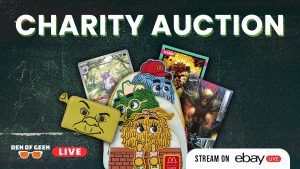
In early cinema, film scores were as simple as a piano accompaniment over a silent film. Over the last few decades, they have become one of the most important components of a movie. Some scores have the power to tug on your heartstrings or to leave you crying into your popcorn, while others will have you gasping out loud as you hear a familiar theme that takes you back to a beloved childhood memory.
Now more than ever, film composers are utilizing the power of leitmotifs; a short musical theme that usually indicates a character, situation, or location. The most famous examples of scores that use specific themes include the Star Wars franchise, The Lord of The Rings, and films across the Marvel Cinematic Universe. Using these films and their scores as examples, I’ll be breaking down why leitmotifs are becoming one of the most important components of film scores, and what effects they have on us as cinema-goers.
Nostalgia
In the last few years, nostalgia has played a huge part in the kinds of movies that are being made. Whether that be Disney remaking an old animated classic into a live-action blockbuster or a new series of Ghostbusters and Jurassic Park films, it seems as though studios believe nostalgia will encourage audiences to keep seeing movies in a theatre.
Star Wars is one of the best examples of a score that’s so good it’s just as famous as the films themselves. That’s mostly thanks to John Williams, who has a particular habit of using leitmotifs in his scores. As far as film scores go, Williams has created a library of work that spans over thirty years and three separate series.
One of the many reasons why the music of Star Wars works so well is because many of the characters and objects within the films have their own theme. For example, the minute Darth Vader enters a room his signature march is heard. Carrie Fishers‘ Princess Leia has her own melody, and so does The Force.
After the original trilogy, John Williams went on to write new scores for both the prequel trilogy and the recent sequel trilogy. While the music might be new, themes from the original trilogy are scattered throughout the other films. The Force theme is one of the most memorable pieces of film music ever written and is arguably the sound of Star Wars. It’s a musical symbol for the power that the Jedi wield, and it appears across all nine films and the subsequent Disney+ spin-offs that came after them.
Star Wars: The Force Awakens (2015) – source: Walt Disney Studios Motion Pictures
Star Wars has a huge generational fan base. Some favor the original trilogy, while others favor the prequels. John Williams uses that familiarity that so many already have with previous films to his advantage, writing a score for the sequel trilogy that gives themes to its newest characters but also features many callbacks to the old films.
I’ll never forget seeing The Force Awakens in a theatre for the first time with my Dad and seeing his reaction to hearing the Force theme having loved the original movies since he was a kid, something I’m positive was a common experience for so many fans. That being said, I’m sure that when the next installment of films is inevitably released, I’ll probably be the one close to tears over hearing Rey’s theme again.
Musical Themes Weave Together Massive Franchises
Another prime example of a film score stretching across franchises is the Marvel Cinematic Universe. Perhaps more complex because it features snippets of work by different composers who worked on different Marvel movies, Alan Silvestri‘s film scores for Avengers: Infinity War and Avengers: Endgame incorporate individual character themes from across the MCU. That moment in Endgame when Tony Stark hands Steve Rogers back his iconic shield will forever be engrained in my mind because of that short trumpet melody of Captain America’s motif.
Avengers: Infinity War (2018) – source: Marvel Studios
Having an identifiable character motif for up to eight different heroes who appear in the same movie circles back to that feeling of nostalgia for loyal fans who have been invested in Marvel movies since Iron Man. That magical feeling when you know your favorite character is about to appear after having been missing for two movies because you can hear their theme is something truly special. Weaving together all of those motifs in what is essentially one giant crossover is extremely fun for the audience, but it’s also a really effective way of weaving together a decade’s worth of films.
There are dozens of examples in the two final installments of The Infinity Saga that really encapsulate how effective musical motifs can be in a film score, but one, in particular, has always stood out to me. There’s a scene in Avengers: Infinity War, where before you even see the city, you can hear the drums of the Black Panther score. Here, the filmmakers are playing with the audience a little, and relying on their knowledge of the movies to get the cue. It’s such a cool musical cue and one of my favorite moments from the film.
Strengthens Worldbuilding
Musical themes can also strengthen the worldbuilding of a film, deepening the connection between us as an audience and the world we are being immersed in. While this applies to Star Wars too, The Lord of The Rings franchise puts a different spin on the leitmotif. The main musical themes of Howard Shores’ score for The Lord of The Rings usually apply to the location of where the current scene is set.
The Lord of The Rings: The Two Towers (2002) – source: New Line Cinema
Each city or area that the fellowship wanders to has its own succinct melody. This way the location is not only established visually, but also musically. It also serves as a helpful reminder to the audience as to where the characters may be headed. In a series where the characters are literally traveling from place to place, a location theme is really important in a world that’s massive. From The Shire to Helms Deep and Gondor, Middle Earth has a colorful soundscape that only enriches the cinematic experience.
A Lasting Impact
Using motifs in film scores creates a deeper connection between audiences and the characters and locations on the screen. Oftentimes, a great film score can have a lasting impact on cinema-goers well after they’ve seen the movie, and it’s no coincidence that some of the most loved film scores of all time rely heavily on motifs. Trends in film scores are always evolving, with composers trying out new sounds and techniques all the time. Hopefully, leitmotifs will be here to stay.
What are some of your favorite film scores? Let us know in the comments!
Does content like this matter to you?
Become a Member and support film journalism. Unlock access to all of Film Inquiry`s great articles. Join a community of like-minded readers who are passionate about cinema – get access to our private members Network, give back to independent filmmakers, and more.





